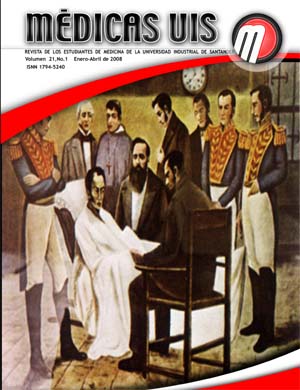Resumen
Desde que la humanidad domina los cielos se ha vuelto cada vez más importante entender los efectos de la altitud, la disminución en la presión de los gases y las fuerzas de aceleración en el cuerpo humano. Volar produce una demanda de adaptación fisiológica que para personas en buenas condiciones de salud y bajo situaciones operacionales normales no presentan problemas tales como la hipoxia, el barotraumatismo, la descompresión y la hipotermia.
El objetivo de esta revision es decribir los diferentes alteraciones y cambios fisiologicos que suceden durante el transporte aereo de pacientes al igual que su relacion con la atmosfera y las leyes físicas que la rigen.
Palabras clave: Presion atmosferica. Barotrauma. Enfermedad de descompresion. Transporte pacientes.
Referencias
2.Brinkley J. Transient. Acceleration De hart Roy. Aerospace Medicine. Lipincott. Third Ed. p. 99-119.
3.Collett H. The conference cometh. Hosp Aviation. 1999;9:5.
4.Cottrell JJ, Garrard G. Emergency transport by aeromedical blimp. BMJ. 1999; 298:869-70. National transportation safety board emergency medical service helicopter operations. Washington, DC: National Transportation Safety Board. 2005. publication No. Collett H. 1989 Accident review. J Air Med Transport. 1999;9:12.
5.Cottrell JJ, Garrard G. Emergency transport by aeromedical blimp. BMJ 1989; 298: 869-70.
6.Dunn JD. Legal aspects of transportation. Probl Crit Care. 1999;4:447-8.
7.Edge WE, Kanter RK, Walsh RF. Reduction of morbidity in interhospital transport by specialized pediatric staff. Critical Care Medicine. 1994;22:1186-91.
8.Fromm R, Cronin L. Issues in critical care transport. Probl Crit Care. 1989;3:439-46.
9.Fromm R, Duvall J. Medical aspects of flight for civilian aeromedical transport. Probl Crit Care. 1999;4:495-507.
10.Galipault JB. Angels of mercy must not fall. The Aviat Safety Monitor. J Air Med Transport. 1992;Jul:31.
11.Gray G. Respiratory Diseases. Aerospace Medicine. De hart Roy Lippincott. Third Ed. 2002. p. 323-9.
12.Guidelines Committee of the American College of Critical Care Medicine. Society of Critical Care Medicine and American Association of Critical-Care Nurses Transfer Guidelines Task Force. Guidelines for the transfer of critically ill patients. Cricial Care Medicine. 2003;21(6):931-7.
13.Guyton and Hall. Aviation, High Altitude and Space Physiology. Medical Physiology Eleventh Ed. 2006. p. 537-44.
14.Holt R. Otolaryngology in Aerospace Medicine. De Hart Roy. Lippincott. Third Ed. 2002. p. 420-5.
15.Kaplan L, Walsh D, Burney R. Emergency aeromedical transport of patients with acute myocardial infarction. Ann Emerg Med. 1987;16:55-7.
16.Kruyer W. Clinical Aerospace. Cardiovascular Medicine. De hart Roy. Lippincott. Third ed. 2002. p. 333-5.
